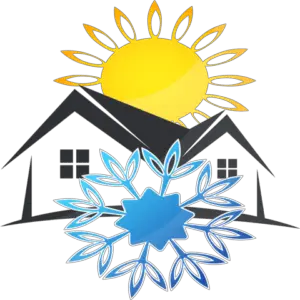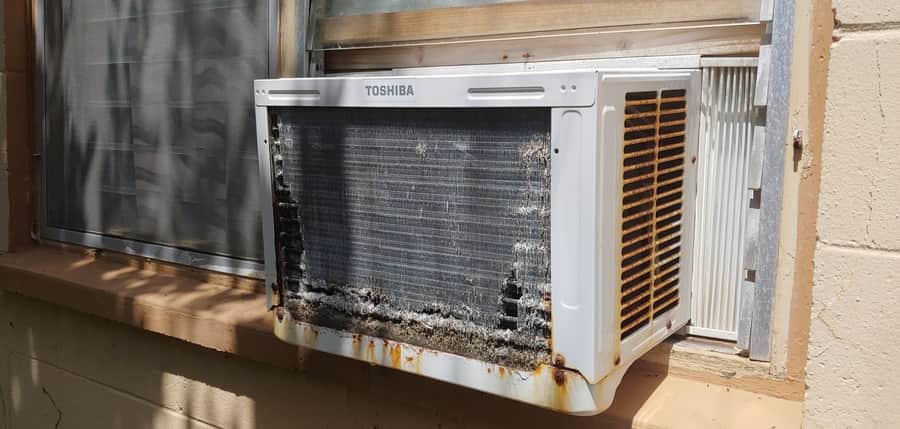Or How A Heat Pump Works Step By Step
Most everyone is familiar with a window air conditioner. In the house, cold air is blowing out of the air conditioner. If you go outside and feel the air coming out of the unit, it’s rather hot, right? Now imagine turning that unit around in the window and blowing that hot air into the house. That’s what a heat pump does.
That’s a nasty looking window unit above. That’s a result of Hawaiian salt air. But no one has to turn anything around with a real heat pump, because a heat pump has a valve to does that for you.
The image below shows a reversing valve inside an outdoor unit. The copper line going into the top of the valve is always the high pressure coming from the compressor. The three copper lines at the bottom of the valve distribute the high pressure refrigerant to two different coils in the heat pump system.
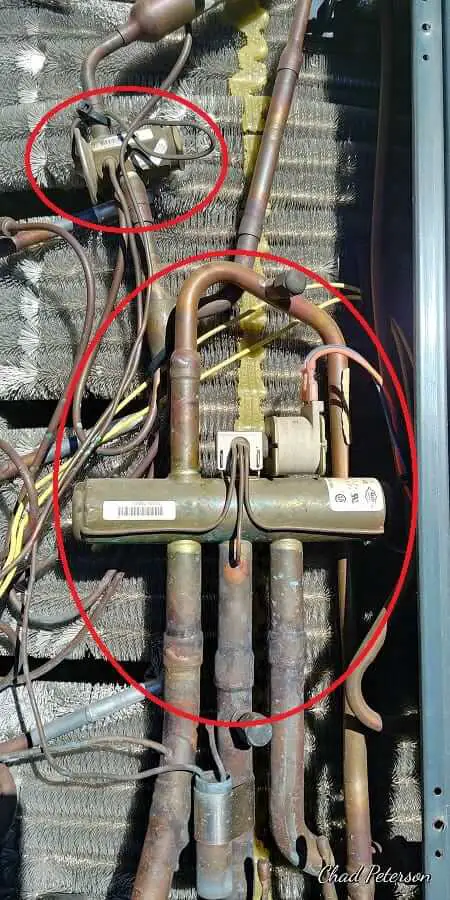
The middle copper line of the three is always the return to the compressor. Of the copper lines on each side of the middle line, one goes to the indoor coil at the furnace and the other to the outdoor coil which you can see behind the reversing valve in this picture.
I want to explain some heat pump basics. First lets try and put into words how an air conditioner works. Most homes that have heating and cooling have one of several types of thermostats. Whether it’s digital or mechanical the idea is the same.
Switches on the thermostat control the mode and when cooling is needed then the thermostat connects relays and switches that turn on the compressor and the fan in the outdoor unit.
The compressor is part of what’s referred to as the sealed system. The sealed system contains a gas which is often called Freon. But Freon is a brand name, the real name is refrigerant. Like Kleenex versus tissue.
The main characteristic of refrigerants is that they boil at a very low temperature. Try to wrap your head around that. Or don’t.
Water boils at 212 degrees Fahrenheit or 100 degrees Centigrade. Refrigerant, specifically R-410A which is in most units today, boils at -55.3 degrees Fahrenheit or -48.5 degrees Centigrade.
Because it boils at a really low temperature it can make things really cold. A compressor pumps the refrigerant up against a valve, so we have high pressure hot gas on one side of the valve and low pressure cold gas on the other side.
Do you remember the big climate warming deal about aerosols? Refrigerant was used in the cans as a propellant. With you hand in the spray it feels quite cold. The refrigerant is what the call flashing. When the pressurized refrigerant in the can hits the low pressure of the atmosphere it boils.
Now you know where the heat and the cold comes from in the system to heat and cool your home.
What’s The Difference Between A Heat Pump And An Air Conditioner?
These next two photos are of Goodman outdoor units. Only one of them is a heat pump. They are identical on the outside……Try and guess which one is an AC unit.
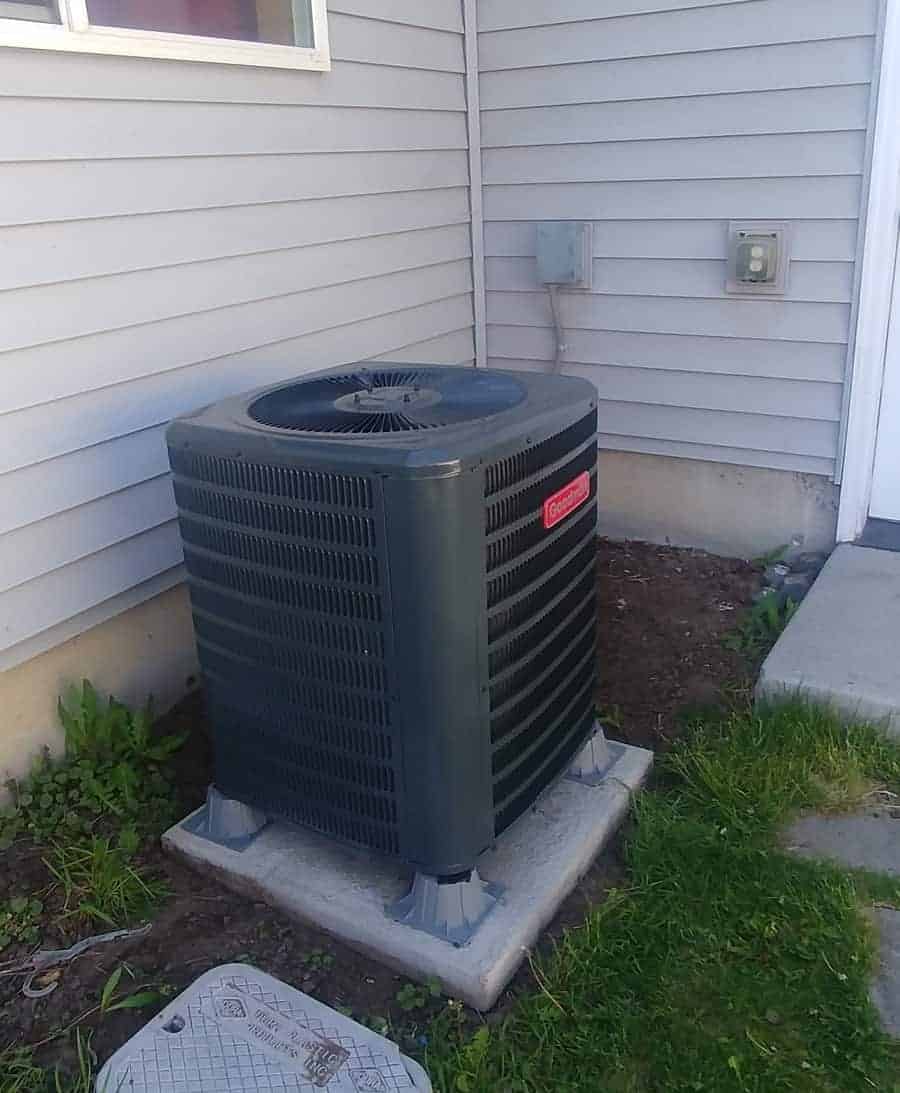
One of them has that reversing valve down inside near the compressor. If you could look down the top past the fan you could see the reversing valve.
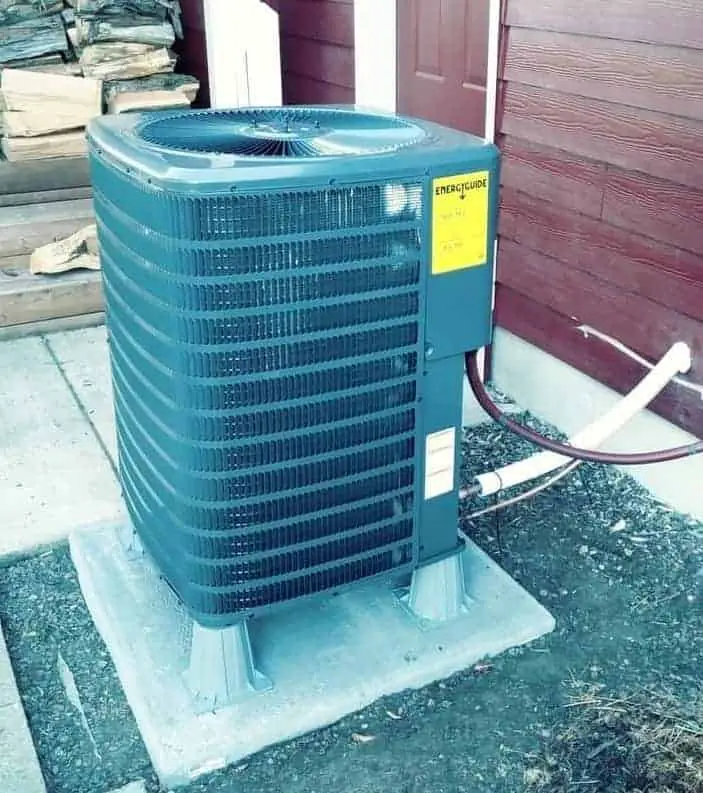
The top on is an air conditioner. It only cools your home. The bottom image is a heat pump. With a reversing valve it will both heat and cool. You can cover an air conditioner in the winter to help keep it clean and bright. But never cover a heat pump because it will die.
Important memo: When or if you cover an AC unit be sure to turn off the breaker. Starting a covered air conditioner in the summer that has a cover will damage the unit. The cover will stop all air flow to cool the compressor and can cause extensive damage.
Air conditioners have evaporators (indoor coil or cold coil) and condensers (outdoor coil or hot coil). Because heat pumps reverse themselves between heating and cooling, most of us in the industry refer to the coils as indoor and outdoor coils.
Heat Pumps Make Weird Noises Compared To Air Conditioners
When a heat pump is heating a home in the bitter cold of winter, that cold coil that was cooling the home in the summer is now the outdoor coil. They didn’t physically trade places. It’s that reversing valve again.
So with the cold coil being in the midst of that freezing weather, it has a tendency to ice up. The control board inside the heat pump has a function that tells the reversing valve to reverse every so often. When it reverses, the outdoor coil heats up and defrosts the ice. What a concept.
When the coil defrosts it causes puddles of water to accumulate under the heat pump. I wrote an entire article about water under you outdoor unit in the winter. You can read it here.
During the defrost cycle, the outdoor fan shut off and the compressor continues to pump hot gas into the outdoor coil to defrost that coil.
Heat pumps should always be elevated off the pad. The images above show the unit lifted up six inches above the pad to allow drain holes in the bottom of the unit to let the water drain.
These risers also keep the outdoor unit a little above the snow. The more snow your area has, the higher the risers should be.
You can build a roof over a heat pump as long as you adhere to the manufacturers recommendations. It just so happen I wrote an entire article about this also and you can read it here.
To Wrap This Up
Heat pumps are an amazing product. They can save energy over other sources of heat. The climate you live in is important to consider. Finding a contractor that will know what best for your area can be a challenge, but they are out there.
